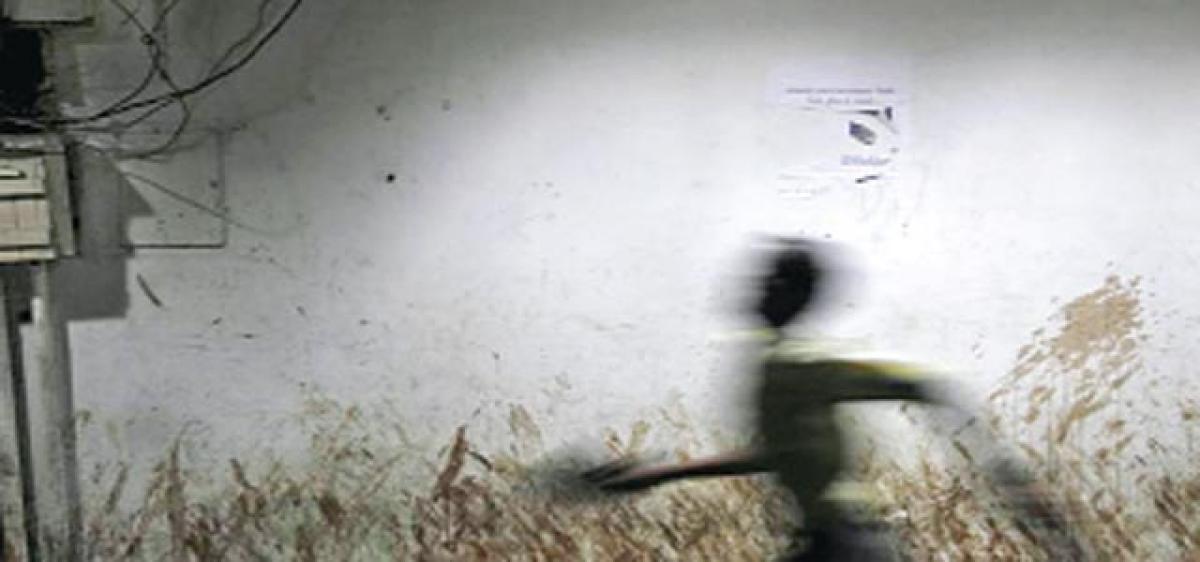Live
- Pushpa 2 Hits ₹1000 Crore in 6 Days: How It Compares to Other Top Indian Films
- Vivo X200 and X200 Pro Launched in India: Price, Specifications, and Features
- Nitin Gadkari Admits Feeling Embarrassed at Global Summits Over Rising Road Accidents in India
- Opposition Slams ‘One Nation, One Election’ Bill as Anti-Democratic; BJP Allies Support the Move
- Celebrate Karthigai Maha Deepam Virtually with Sri Mandir’s LIVE Darshan Experience
- BJP Extends Support to Samagra Shiksha Abhiyan Employees' Strike, Demands Immediate Regularization and Welfare Benefits
- Dr. M. Priyanka Stresses Quality Education, Nutritious Meals, and Cleanliness in Schools
- Mandal Level CM Cup Sports Concludes in Ija with Promising Talent and Enthusiastic Participation
- Harish Rao Slams Revanth Reddy: "More Talk, Less Action"
- Revolutionising Oil and Gas: Gaurav Kumar Sinha’s AI-Driven Innovations Transforming Efficiency and Profitability
Just In
Sold into slavery: India’s lost generation of missing children


It was a balmy August afternoon last year when 11-year-old Piyush Sharma disappeared while playing outside his home in the small east Indian town of Hatia. The skinny little boy, with big brown eyes and an infectious smile, had just returned from school and told his mother he wanted to play outside before lunch.
It was a balmy August afternoon last year when 11-year-old Piyush Sharma disappeared while playing outside his home in the small east Indian town of Hatia. The skinny little boy, with big brown eyes and an infectious smile, had just returned from school and told his mother he wanted to play outside before lunch.
When she called for him 15 minutes later he was gone. “It's been nine months since I saw him. He was still wearing his school uniform - a pink shirt and blue shorts. Someone must have taken him. He always played nearby,” said Pinki Sharma, 35, Piyush's mother, by phone from Hatia in Jharkhand state.
“My husband has travelled to many places looking for him, but no one knows anything. But I will look for him until I die.” Piyush is one of about 250,000 children registered as missing on the government's Track Child portal between January 2012 and March 2017 - that's five children vanishing every hour.
But campaigners say these figures are just the tip of the iceberg, as many cases are not registered by parents or the police, and the children dismissed as runaways. Most, however, are sold into slavery in a country where poverty prevails and child labour is normalised, despite being banned.
The Track Child data also shows nearly 73,000 children - 30 percent - are still missing despite a raft of initiatives to better protect and find these children. A lack of training of police, child welfare and protection officials, poor coordination between agencies in different states, coupled with massive public apathy is hampering the battle to locate India's “lost generation”, say campaigners.
Poverty
Missing children are so common in India that notices printed in classified sections of India's daily newspapers are buried alongside tender notices and job vacancies, with blurred black and white photos alongside a description and a contact number.
Pintu, 10, last seen at a Delhi railway station wearing a red sweater and black trousers. Shiwani, 16, who vanished outside her home in southern Delhi, dressed in blue jeans. Pooja, 13, in white salwar kameez, last seen in a Delhi market.
Each notice ends in the same way: Sincere efforts have been made by local police to trace out this missing girl/boy, but no clue has come to light so far. Campaigners say some of these children are abused runaways. Others are abducted. Some come from poor families duped by traffickers with the promise of a good job. Some are girls in love - lured by boyfriends who sell them into prostitution.
Rishi Kant from Shakti Vahini, a Delhi-based anti-trafficking charity, says up to 70 percent of the missing children found are victims of trafficking and slavery. “Most are trafficked by organised gangs who know the system. They know how to lure, transport and sell them on to employers,” said Kant, who is involved in rescuing trafficking victims.
“As a result, they end up locked in brothels, wealthy homes and small workshops - making it hard to detect them or for them to escape.” India has one of largest populations of children in the world, with more than 40 percent of its 1.2 billion people below the age of 18, according to its 2011 Census.
An economic boom of the last two decades has lifted millions out of poverty yet many children continue to be born into dire circumstances with India home to over 30 percent of the world’s 385 million most impoverished children, according to a 2016 World Bank and UNICEF report. They make easy prey for traffickers, fed promises of a job and a better life but often ending up in forced labour.
While some children manage to escape or are rescued in police raids after tip-offs from activists or local residents, others are not so fortunate, trapped for years. “The problem is that in many places police are not trained and not integrated into the existing mechanism to register and trace missing children,” said P M Nair, chair professor and research coordinator on human trafficking at the Tata Institute of Social Sciences in Mumbai.
“They often do not see the link between missing children and trafficking and may dismiss the case as a runaway child, rather than register it as a crime and investigate it.”
There is also little communication between police, government officials and activists - making it difficult for those where the child goes missing to coordinate with counterparts where the child may have been taken, he added.
By Nita Bhalla

© 2024 Hyderabad Media House Limited/The Hans India. All rights reserved. Powered by hocalwire.com






